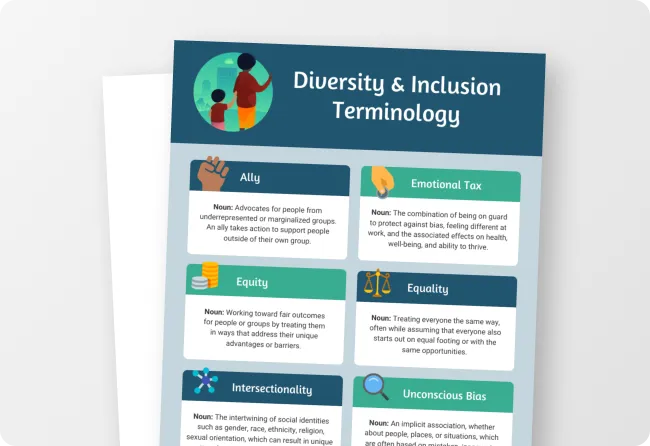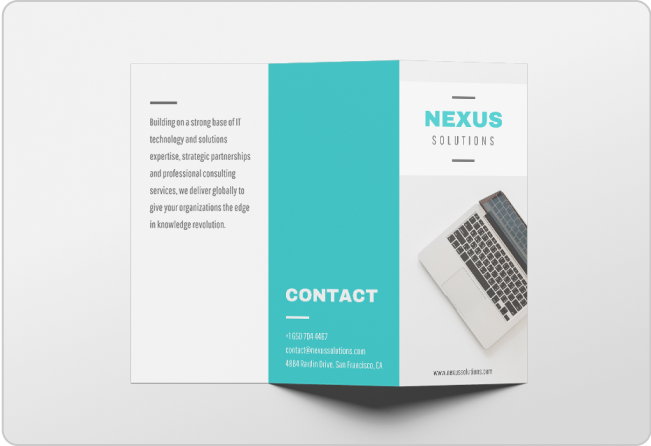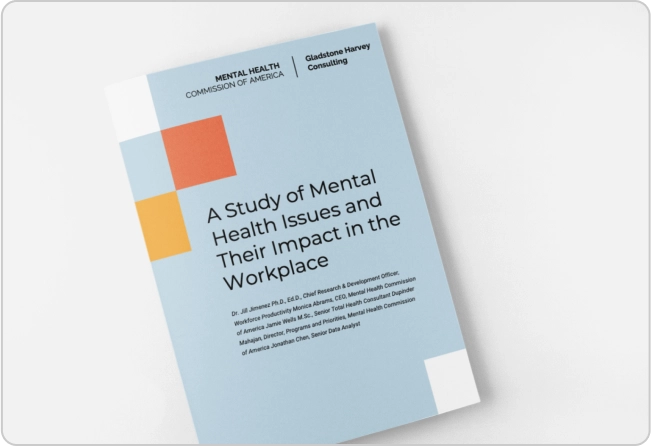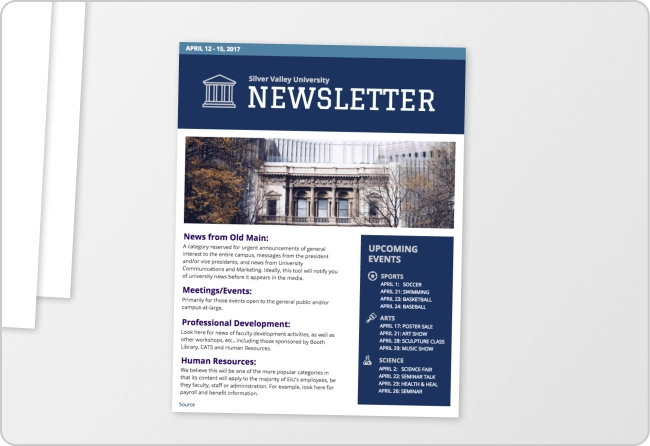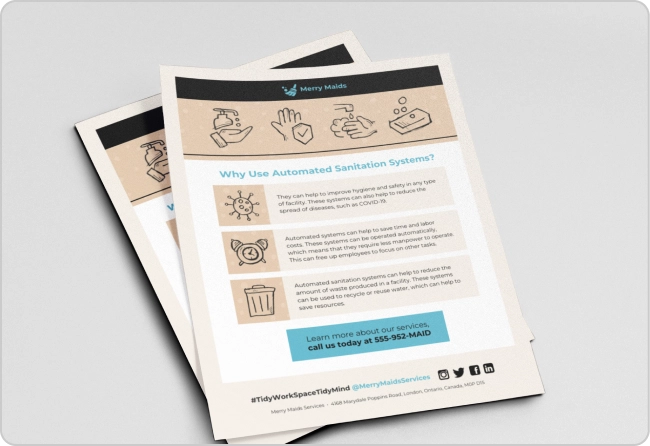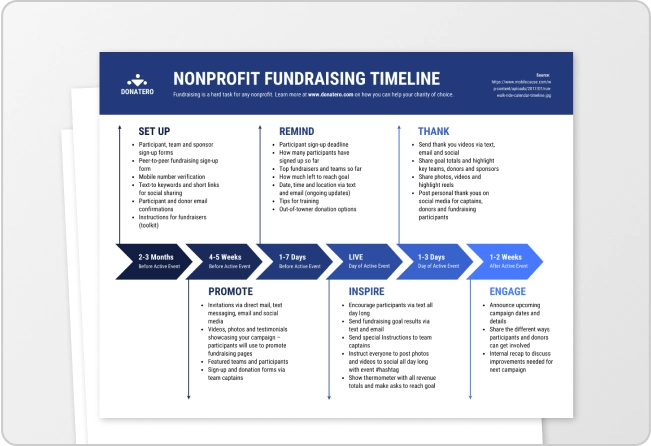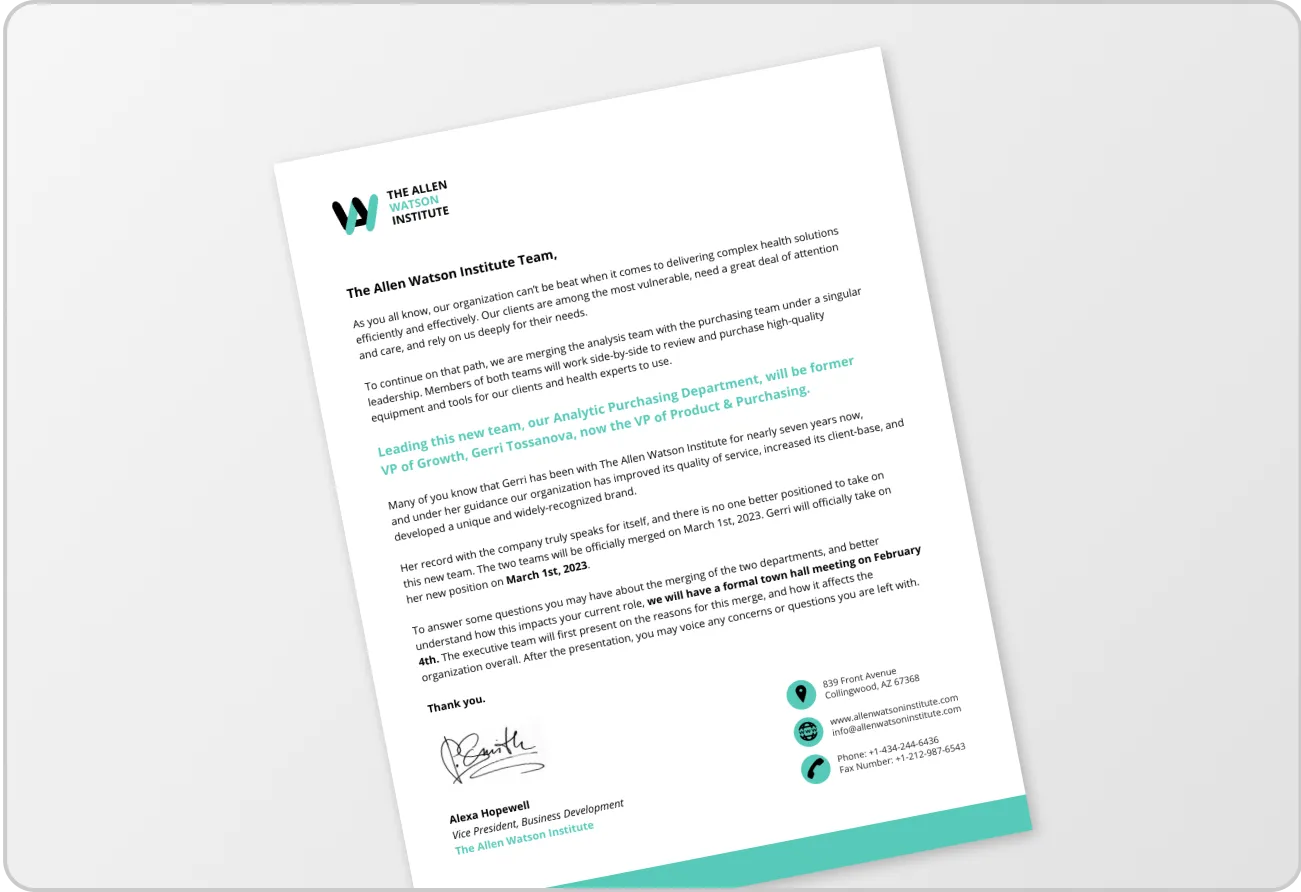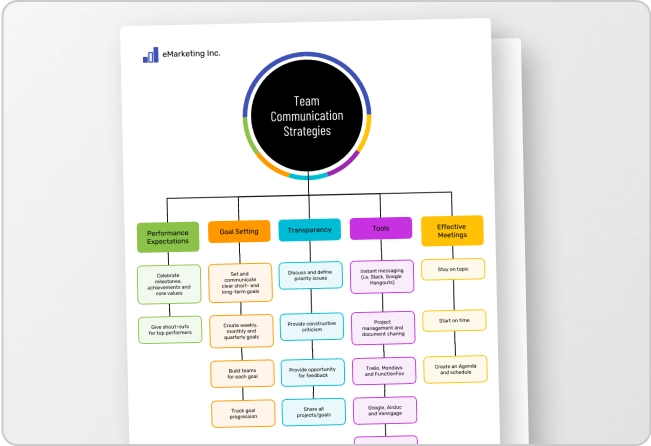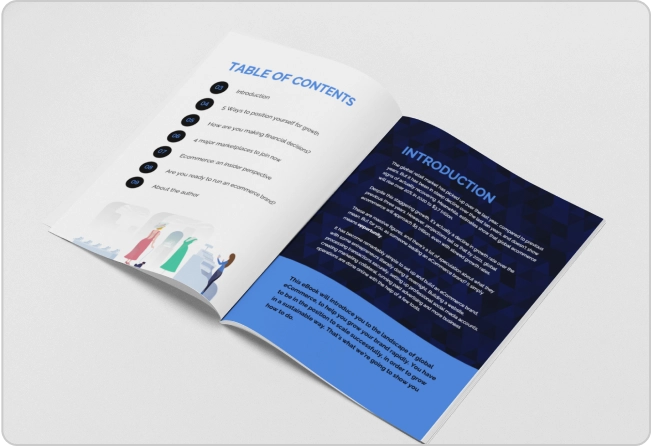
If you work for a nonprofit organization or are a researcher, you’ll know that a grant proposal is a document submitted to a funding agency.
The national average success rate for grant proposals is roughly 10%, meaning about 1 in every 10 applications receives funding. Grant proposals are also your chance to persuade funders to drop serious funding your way: in the U.S., federal grants to state and local governments alone top $1 trillion annually.
Grant proposals are also known as a request for application, notice of funding opportunity, or request for quotes and qualifications.
Grant proposals are your chance to convince grantmaking bodies (agencies that distribute funds) to hand over money. Generally, grant proposals include information such as an organization’s mission and budgetary needs.
In this post, I’ll show you how to write a successful grant proposal (tips and templates included!) and then teach you how to make a grant proposal using a Proposal Maker and grant proposal templates.
Before you start: Planning your grant proposal
Preparing a strong grant proposal starts long before you begin writing and a little upfront planning makes the whole process smoother and more strategic.
- Look into the funder’s mission and past grantees so you can confidently shape a proposal that fits what they care about.
- Double-check eligibility details early to save yourself time and avoid surprises later.
- Pull together key documents like financials, org info, letters and forms so everything you need is ready when you start writing.
- Get clear on your main goal and the impact you want to make, even before you draft a single sentence.
- Sketch out your proposal structure ahead of time to keep your messaging consistent and focused.
- Gather credible data and evidence that can back up your idea and make your case stronger.
How to write a grant proposal?
Grant writing can be tricky, but it doesn’t have to be if you understand the basics.
In this section, I’ll give you tips on how to write grant proposals that’ll impress prospective funders (grant writers take note!).
Include a cover letter
The cover letter is not technically part of a grant proposal but they’re core to a successful grant application because it helps funders understand who you are.
Busy decision makers want to know who they’ll be funding and look for clues in your cover letter after reading through your proposal.
In your cover letter, don’t be afraid to bring out your personality, but also make sure you cover the basics like how your project fits with the funder’s objective.
Include an executive summary
The executive summary is probably the first (and maybe only) part of a grant proposal read by a funding organization.
It needs to be concise and summarize key points such as goal, strategy, people involved, expected results, and budgetary needs.
Here’s an example executive summary for some inspiration.
Provide organizational information
Providing organizational information in a grant proposal helps build credibility and establishes trust.
More importantly, this section allows funders to assess the alignment between their funding priorities and your organization’s goals and activities.
Therefore, make sure to answer questions like: What is your mission? Do you have an organizational history? What will be the impact of this project? What other programs or services do you render?
Here’s an example of background organizational information you can make your own.
State your objective(s)
Early in your grant proposal, you should state the objectives of your project, the target audience, and expected results.
This underscores the feasibility of your project within a grant timeframe and can influence funders’ decision on a project’s worthiness (i.e.; the difference between a yes and no).
Here’s a great example of a grant proposal that nails this section.
Setting realistic goals & measurable outcomes
When you’re defining your project goals, keeping them SMART—specific, measurable, achievable, relevant, and time-bound—helps everything feel more focused and doable. It keeps you from overpromising and gives funders a clear sense of what you’re aiming for.
Try to connect each goal to the actual impact you want to make and pick simple, meaningful metrics that show real progress.
A realistic timeline also goes a long way because it helps reviewers understand how your project will unfold step-by-step.
And to bring it all together, outline how you’ll evaluate success: what you’ll measure, the data you’ll collect and how you’ll know you’ve hit your targets. When your goals, timeline, and evaluation plan work together, your proposal reads as thoughtful, achievable, and well-planned.
Describe the statement of needs
The statement of needs section is used to build strong case for your project.
In this section, use data, facts and figures to back statements. This will be more meaningful than just words alone.
But make sure your data is accurate. There’s nothing worse than misleading information which can lead to rejections and damage your reputation.
Here’s a grant proposal template that has a customizable statement of needs.
Explain your methods and strategies
You’ve identified a problem and solution, but how are you going to achieve what you plan to do?
That’s what the methods and strategies section is for. Here, potential funders want to see how you’ll use their funds to determine if the project is viable.
For example, maybe your objective is to enhance community health through a mobile clinic initiative.
Detail each step of this process from procurement of medical equipment and vehicles, recruitment and training process for healthcare professionals, and logistics for deploying mobile clinics.
Here’s an example of a grant proposal that first lists goals and objectives and immediately provides an overview of the path to success.
Tell your story Eefectively
A great proposal reads like a clear, confident story, not just a collection of sections. Try to guide the reviewer from the need you’ve identified, to the methods you’ll use, to the outcomes you expect, in a way that feels natural and connected.
Showing how each part builds on the last helps reviewers understand your reasoning and trust your approach. You can weave in small examples or quick snapshots to make your narrative more relatable without overwhelming the reader with details.
The key is to focus on clarity, keep jargon to a minimum and aim for steady, smooth transitions so your writing feels effortless to follow. When your story flows well and ties your need, strategy and impact together, your proposal comes across as thoughtful, credible, and genuinely compelling.
Include an evaluation plan
When funders hand out money, they have certain conditions, like making sure you are held accountable of project progress. Often, you’ll only get more money to continue as you complete milestones.
The evaluation plan section is where you show funders how you’ll spend money as described in your grant proposal to ease their fears and doubts.
This section also shows funders that you have a realistic timeline for the project and that you’re not using the funds for any other purposes.
Include a project budget
Perhaps the most part of your grant proposal is the project budget. This is where you reveal exactly how you’ll be using funds.
Be transparent and provide a full overview of expenses and detail where and how it’ll be spent.
A great way to do this is to use an itemized table or financial plan.
When presenting an overall sum, make sure you don’t overstate or understate your needs. You don’t want funders to doubt your true intent or doubt project viability.
Here’s a grant proposal with a budget section you can use.
Include a financial sustainability plan
Most grant writers overlook including a long-term financial sustainability plan.
Most funders view grants as a long-term investment and want to back projects that can be sustainable even after the money stops rolling in.
Demonstrating a clear understanding of these factors shows funders that you have thoroughly considered the project’s financial trajectory and are prepared to manage it responsibly.
What should you include here? Total cost of future ownership, maintenance costs, inflation, ongoing, and future growth potential are a few ideas.
Sign off with your team information
Treat grant proposals as official documentation.
At the end of your grant proposal, include your (or your company’s) contact details. This makes it easier for the funders to reach out to you and do their research on you and your team.
Here’s an example of a grant proposal with a great ‘about us’ section.
If you’re also working on client-facing proposals, our business proposal guide offers helpful tips and examples.
Sample grant proposal templates
Now that you understand the basics of a grant proposal, it’s time to get to work and create your own.
But you don’t need to start from scratch. Instead, edit these grant proposal templates and convert them into your own winning proposal
(Hint: visit the links to see the entire template).
How to identify potential funding sources?
Before designing a grant proposal, identify your funders. This helps you tailor the grant proposal better. Let’s see how you can identify potential funding sources:
- Define project goals and funding needs: First, outline your project objectives and identify the specific resources you need, such as financial support for research, programs, or equipment.
- Research funding opportunities: Look for funding sources that match your project’s focus, such as government grants, private funding, corporate sponsorships, or non-profit grants
- Use online databases: Access grant databases like Grants.gov, Foundation Directory Online, or GrantWatch to find grants related to your project.
- Review past grant recipients: Look into projects similar to yours that have been funded before. This will give you insights into the types of organizations that provide funding in your sector.
- Assess eligibility criteria: Carefully read the eligibility requirements for each funding opportunity to confirm that your project qualifies for the funding. Then apply for the grant.
Understanding the types of grants available
Let’s understand the four common types of grants you can take for your project or organization
- Government grants: Funded by the Federal, State, or Local government agencies. They typically support a wide range of projects, including community programs, scientific research, education, and social services.
- Foundation grants: Given by Private and corporate foundations to support projects aligned with their mission or values. These grants are often more flexible but competitive than government grants.
- Research grants: Awarded by government bodies, universities, or private institutions to support academic, medical, or scientific research.
- Project grants: Provided by foundations, government agencies, or corporations and may support initiatives in areas like education, health, arts, and community development.
Related: How to Write a Product Proposal: Step-by-Step Guide + Templates
What are the factors to consider before writing a grant proposal?
- Audience: Consider your target audience and tailor your copy to their interests and needs.
- Funding: Choose your funder carefully. Always have an alternative list of potential funders and know the long-term sustainability of your project.
- Understand the grant requirements: Every grantmaking body sets its own rules regarding goals, application deadlines, and guidelines, so make sure you understand them and can differentiate between them.
- Have a plan: Create a specific, actionable plan for what you want to do and why. Make sure you know how your plan will achieve positive results.
- Write a draft: Research and write down each request in an outline. Plan how you’ll add visuals to give your grant proposal an extra edge.
- Be clear and concise: Avoid writing in the past tense and use action verbs. Again, visuals can sometimes be a better option over words.
- Include supporting materials: Provide a budget of how you’ll use the funds and include evidence to substantiate any claims you make.
Other helpful tips to consider
Here are some extra tips to help you write a grant proposal that stands out.
- Start early
- Apply early and often
- Get feedback and revise your proposal accordingly
- Be brief, concise and clear
- Be organized and logical
- Be explicit and specific
- Be realistic in designing the project proposal
- Follow up after the proposal
The importance of building relationships with funders
Funders are not just for the sake of investment in your project or organization. Building a good rapport with your funders helps establish trust and credibility. This increases the chances of them supporting and guiding you in your project. You can also connect with potential funders to understand their goals and ideas and tailor your proposals better.
Building a long-term relationships also makes it easier to leverage other investors in your funder’s network so you can execute projects successfully.
What are the common challenges in writing grant proposal?
Here are some challenges organizations face while writing grant proposals:
- Building a narrative: It can be difficult to crafting a compelling narrative that clearly communicates the project’s goals, objectives, and expected outcomes. Focus on storytelling that connects the project’s objectives with the problem you’re addressing.
- How to add concise information: Grant proposals often have unnecessary details that can overwhelm the readers. Make sure to prioritize key points and use bullet points or subheadings to break up dense information.
- Collecting and formatting data: Grant proposals require supporting data to justify the need for the project and demonstrate its potential success. Collecting the right data and presenting it can be time-consuming. To overcome this, use charts, graphs, or tables to present data clearly and ensure it’s relevant to your narrative.
- Demonstrating impact: Showing potential impact can be challenging, especially when the project is still in its early stages. You can provide realistic projections or case studies to demonstrate potential results and outline how project success will be measured.
Related: 5 Marketing Proposal Examples to Elevate your Business
How to create grant proposals with Venngage
If you want to create grant proposals that grab attention, look no further than Venngage.
With Venngage, you can you communicate boring technical info with engaging visuals and customize our professionally-designed grant proposal templates.
Step 1: Sign up for a Venngage account (it’s free!)
Sign up for a Venngage account for free using your email, Gmail or Facebook.
Step 2: Search ‘grant proposal templates’
Venngage already has grant proposal templates you can edit to suit your idea and vision.

Note: Some of our grant proposal templates are free to use and some require a small monthly fee. Sign-up is always free, as is access to Venngage’s online drag-and-drop editor.
Step 3: Customize your grant proposal
Browse our selection of grant proposal templates. Once you find one you like, click on it to launch the editor tool.
Here, you’ll be able to add your own text, change the design, and customize the template as you like. Venngage’s editor also lets you add engaging visuals, customize the font style and color to match your brand’s design guidelines, and drag and drop elements.
Let’s say you want to change the background color of the proposal. Just select the text or background and select the “Replace” feature and select a different color.

If you sign up for a Business Plan, you’ll also get access to My Brand Kit. With this, you can apply your brand colors to any design with one click.
When your grant proposal is complete, you can save it as a PDF or PNG file if you’re on a Business Plan.
However, all users will always have access to shareable link that they can send potential funders.

Frequently asked questions
How long is a grant proposal?
The length of a grant proposal depends on the funder but a typical grant proposal is usually between 5-20 pages. The funding body might request additional documents as well, so it’s important to know funding guidelines.
What is the writing style for a grant proposal?
The writing style for a grant proposal is formal. You want to be concise and objective, so focus on clarity, impact and your alignment with the priorities of the funder.
What is the lifecycle of a grant proposal?
The grant proposal lifecycle begins with research, planning and development, followed by drafting, revising and editing the narrative and budget. Applications are then submitted before funders review and make decisions. If successful, negotiations may occur to finalize details, after which the funded project is implemented according to the approved plan. Finally, progress and final reports are submitted to the funder. This cyclical process ensures accountability and project success.
What is the difference between a proposal and grant proposal?
Proposal is a broader term encompassing various applications for funding, resources, or partnerships whereas a grant proposal specifically refers to an application for grant funding from a foundation, government agency, or other organization.
What is the difference between a grant proposal and a grant letter?
A grant proposal is a detailed document that includes the project description, methodology, financial plan, and financing rationale. A grant letter, on the other hand, can be a more straightforward request or statement of interest.
Can someone else write a grant proposal for me?
Yes, you can hire a professional grant writer to write a grant proposal for your business. However, such services can be costly, especially for small businesses. Instead, you can use pre-designed grant proposal templates and easily customize the text and design.
Final thoughts: Create grant proposals with Venngage and secure funding today
A well-structured grant proposal with appealing visuals can make a lasting impression on funders and tip the balance in your favor.
Don’t waste your time with tools like Word, Google Docs where you’ll get limited design flexibility and visuals that don’t engage.
Instead, head over to Venngage’s grant proposal templates to give yourself a winning edge.








































